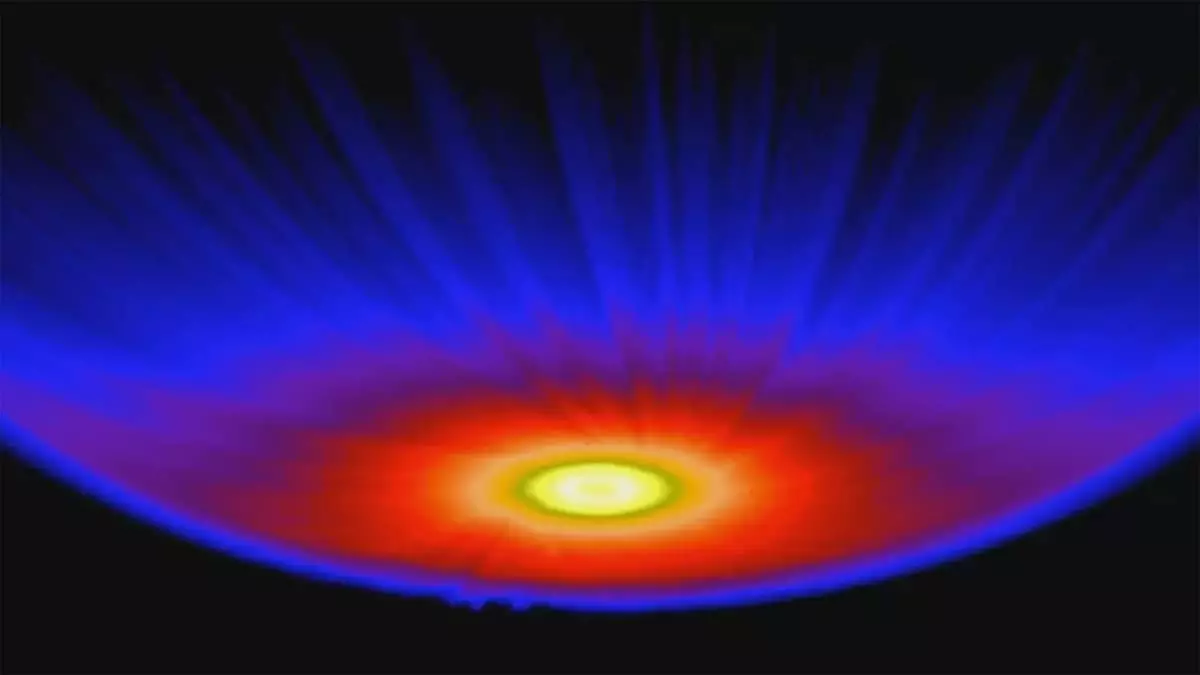Astronomers have recently made a groundbreaking discovery, detecting an astrosphere around a star resembling our Sun. This pivotal finding, presented during the 25 Years of Science with Chandra symposium on December 3, 2024, marks a notable step forward in our comprehension of stellar evolution. Astrospheres, similar to a bubble formed by charged particles expelled from a star, serve as a protective shield for surrounding planetary systems, influencing their ability to foster life. This extraordinary observation offers an unprecedented glimpse into the formative phases of stars akin to our own.
An astrosphere is essentially a bubble of ionized gas that forms as a result of a star’s stellar wind—a constant flow of charged particles that varies in strength and composition among different stars. The Sun’s heliosphere, for instance, is widely recognized for its ability to extend far beyond Pluto, providing essential protection against harmful cosmic rays. Until now, however, astrospheres had not been effectively documented around Sun-like stars despite extensive research efforts spanning over two decades. The recent revelations about the star HD 61005 offer not only a fresh perspective on these phenomena but also reveal the complexities of their formation.
The Star at the Center of Discovery
HD 61005, a star with properties closely mirroring those of our Sun, has been dubbed “The Moth” due to its unique, wing-like dust disk. Its designation stems from its remarkable trajectory through an interstellar gas cloud, moving at a speed of approximately 10 kilometers per second, which has resulted in the formation of a distinctive disk shape around it. At around 100 million years of age, HD 61005 represents a young star, a crucial phase characterized by more potent stellar winds—conditions ripe for examining the characteristics and implications of astrospheres.
NASA’s Chandra X-ray Observatory played a central role in this discovery, revealing an extensive halo of X-rays enveloping HD 61005, which extends nearly 100 times further than the heliosphere of the Sun. Contrary to scientists’ expectations, the astrosphere around this star exhibited a spherical morphology, indicating that the powerful stellar winds effectively counteract external pressures. Such characteristics are essential in understanding how early stars, like the Sun, interacted with their environments, potentially influencing conditions on nascent terrestrial planets.
This discovery not only provides valuable insights into the behavior of the early Sun but also has broader implications for the study of the potential habitability of exoplanets orbiting stars with similar characteristics. As researchers continue to unravel the complexities of astrospheres, our understanding of stellar systems will expand, ultimately aiding the search for life beyond Earth. The detection of astrospheres like that of HD 61005 represents a significant leap in astronomical knowledge, setting the stage for future studies on the protective roles that such structures play across the cosmos.


Leave a Reply